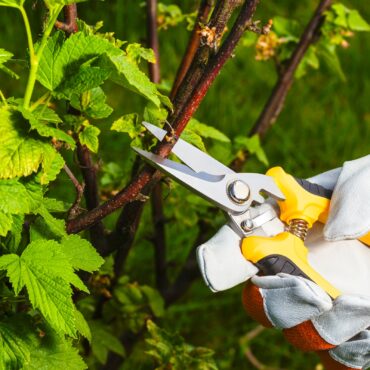 Healthy plants require pruning. Plants should be pruned after they fruit or flower. Improper pruning can lead to apical dominance. When you’re not pruning correctly, you may be removing the vertical growth of the plant and causing the release, a hormone that says to the plant, “Hey, there is nothing growing up here!” This causes the plant to send up endless amounts of shoots and affects the health, growth and aesthetics of the plant for years to come. The excessive growth makes for a weak and unhealthy plant that will not fruit or flower properly.
Healthy plants require pruning. Plants should be pruned after they fruit or flower. Improper pruning can lead to apical dominance. When you’re not pruning correctly, you may be removing the vertical growth of the plant and causing the release, a hormone that says to the plant, “Hey, there is nothing growing up here!” This causes the plant to send up endless amounts of shoots and affects the health, growth and aesthetics of the plant for years to come. The excessive growth makes for a weak and unhealthy plant that will not fruit or flower properly.
The purpose of pruning is to control and reduce the plant size, as well as to remove dead wood, always following the plant’s natural growth characteristics.
Pruning a tree has many benefits. The first and most important is keeping the people around it safe. A dead branch can fall from a tree at any time, endangering nearby people, buildings and power lines. Removing dangerous limbs and maintaining a safe tree is always the best course of action. However, depending on the size of the tree and the location of the branches to be pruned, pruning itself can also be very dangerous. To ensure your safety, hire an expert do any pruning you’re not absolutely comfortable and confident doing.
Pruning a tree also can influence in what way the tree grows. With proper pruning, you can force the tree to grow a certain configuration of limbs and branches that is more ideal for the structural integrity of the tree. Maintaining the tree’s structure helps to mitigate the risk of broken limbs and falling branches. A properly pruned tree will not have compromising branch structures and improper weight distribution that could lead to disaster later on in the tree’s life. Structural pruning can also greatly improve the general look of the tree. If aesthetics is important to you, proper pruning can make a tree grow in the desired fashion.










